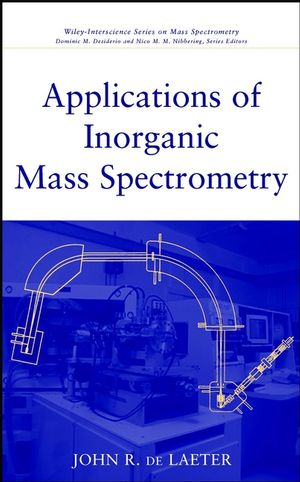Applications of Inorganic Mass SpectrometryISBN: 978-0-471-34539-8
Hardcover
496 pages
August 2001
 This is a Print-on-Demand title. It will be printed specifically to fill your order. Please allow an additional 10-15 days delivery time. The book is not returnable.
|
||||||
A thorough assessment of the applications of inorganic mass spectrometry
Mass spectrometry is a powerful analytical technique used to identify unknown compounds, to quantify known materials, and to elucidate the structural and chemical properties of molecules. Inorganic mass spectrometry focuses on the analysis of metals and elements rather than organic compounds. Applications of Inorganic Mass Spectrometry describes developments in mass spectrometric instrumentation, together with applications in metrology, nuclear science, cosmochemistry, geoscience, environmental science, and planetary science.
Divided into two parts, the first part of the book reviews the numerous technological advances that have occurred in mass spectrometry since 1947, a date regarded as the birth of modern mass spectrometry. The second part offers an up-to-date description of the many applications of inorganic mass spectrometry and includes a comprehensive set of references for each application.
It is doubtful that any other analytical instrument has had such a significant impact in so many fields of science as mass spectrometry. Applications of Inorganic Mass Spectrometry provides researchers, scientists, and engineers with an essential reference for this vital science.
Mass spectrometry is a powerful analytical technique used to identify unknown compounds, to quantify known materials, and to elucidate the structural and chemical properties of molecules. Inorganic mass spectrometry focuses on the analysis of metals and elements rather than organic compounds. Applications of Inorganic Mass Spectrometry describes developments in mass spectrometric instrumentation, together with applications in metrology, nuclear science, cosmochemistry, geoscience, environmental science, and planetary science.
Divided into two parts, the first part of the book reviews the numerous technological advances that have occurred in mass spectrometry since 1947, a date regarded as the birth of modern mass spectrometry. The second part offers an up-to-date description of the many applications of inorganic mass spectrometry and includes a comprehensive set of references for each application.
It is doubtful that any other analytical instrument has had such a significant impact in so many fields of science as mass spectrometry. Applications of Inorganic Mass Spectrometry provides researchers, scientists, and engineers with an essential reference for this vital science.



